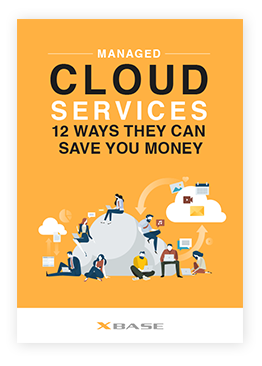In one of our previous posts, we covered IT infrastructure considerations you must make before migrating to the cloud. But beyond network latency, bandwidth, and configurations, here are a couple of other things you must keep in mind.
Have users adjust to how they will access their apps
Migrating to the cloud often means changing the IP addresses and DNS entries of your online assets, so that’ll affect how your staff will log on to their apps. You’ll need to figure out if you want to migrate app users in phases or if you’ll do it in one sweeping motion, as well as consider changes to user access protocols such as identity authentication procedures.
Factor in user training for cloud versions of key applications
While it’s true that cloud versions of apps are often easier to use, their interfaces can be quite different from desktop versions, plus there may be significant differences in functionality. Users will adopt applications faster and become more proficient if they are educated up-front on these differences. Without this initial training investment, your help desk may be flooded with support calls and your cloud rollout success could be threatened because of user backlash.
Accommodate app dependencies
As you move apps from on-site resources to the cloud, you may adversely affect how they interact with one another. An app that’s dependent on another one may end up with limited functionality if the latter is disconnected from the former, or entire workload processes may suffer outages if the migration sequence is executed without proper planning.
Review licensing agreements
You must look into the licensing of your apps once you move them to the cloud as this may dramatically increase costs if you’re not careful. Some apps are licensed per virtual machine, others per processor core, and the rest are for the entire infrastructure.
If the app is used by one department only but will be licensed across your entire cloud, then you’ll end up paying too much for it. Application licensing per core is much more cost-effective, but if your CSP can’t configure your cloud environment per core, you might end up burning money as well.
Download our free eBook!
Get a better idea of what managed cloud services can do for your business by reading our eBook: Managed Cloud Services: 12 Ways They Can Save You Money.
Set clear expectations regarding IT service management
The appeal of the cloud is that the provider takes care of your IT infrastructure. However, be vigilant: what you might expect to be the CSP’s responsibility might actually be beyond its scope of services. Communicate your technical requirements and define service level agreements clearly to avoid playing the blame game when things go wrong.
Examine data security requirements
While cloud providers often claim to be secure against data breaches, you’ll need to consider:
- Whether that provider can fulfill data regulations compliance requirements for your industry
- What you need to add to the cloud infrastructure as workarounds in case compliance demands are too particular, new, or extraordinary for the provider to fulfill on its own
- Your share in the responsibility of keeping data secure
Data security also means ensuring that data is available when needed. Therefore, you also have to factor in data backup and disaster recovery processes — both may incur outsized costs if not architectured properly.
Migrating to the cloud is a crucial business decision that requires thorough planning. To realize the cloud’s full potential while avoiding the many pitfalls along the way, talk to our cloud experts at XBASE Technologies Corporation. With our Exponentially Better™ Cloud Services, you can look forward to smoothly accelerating the growth of your business.


